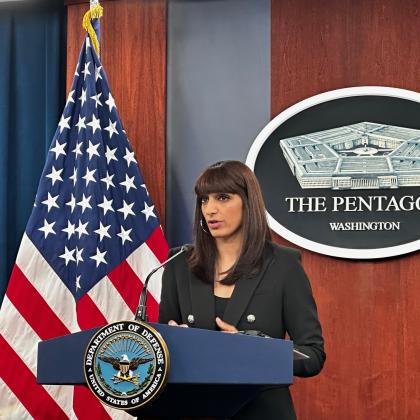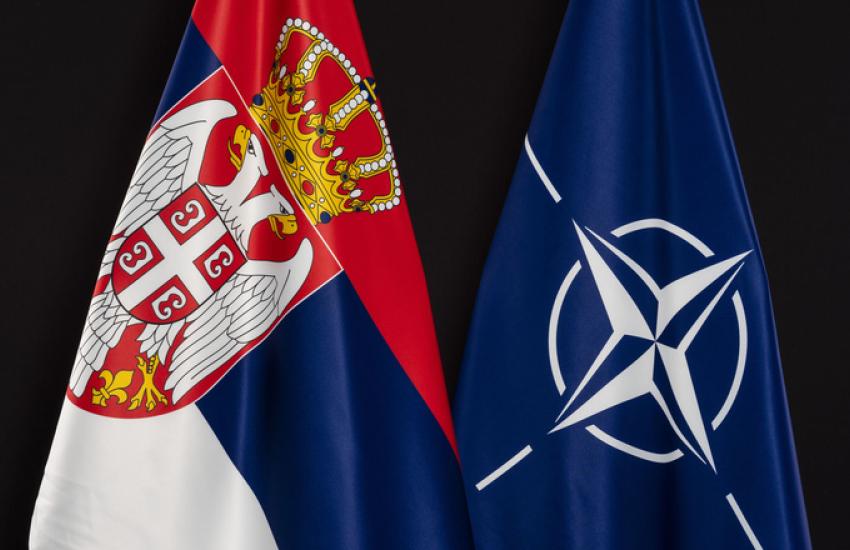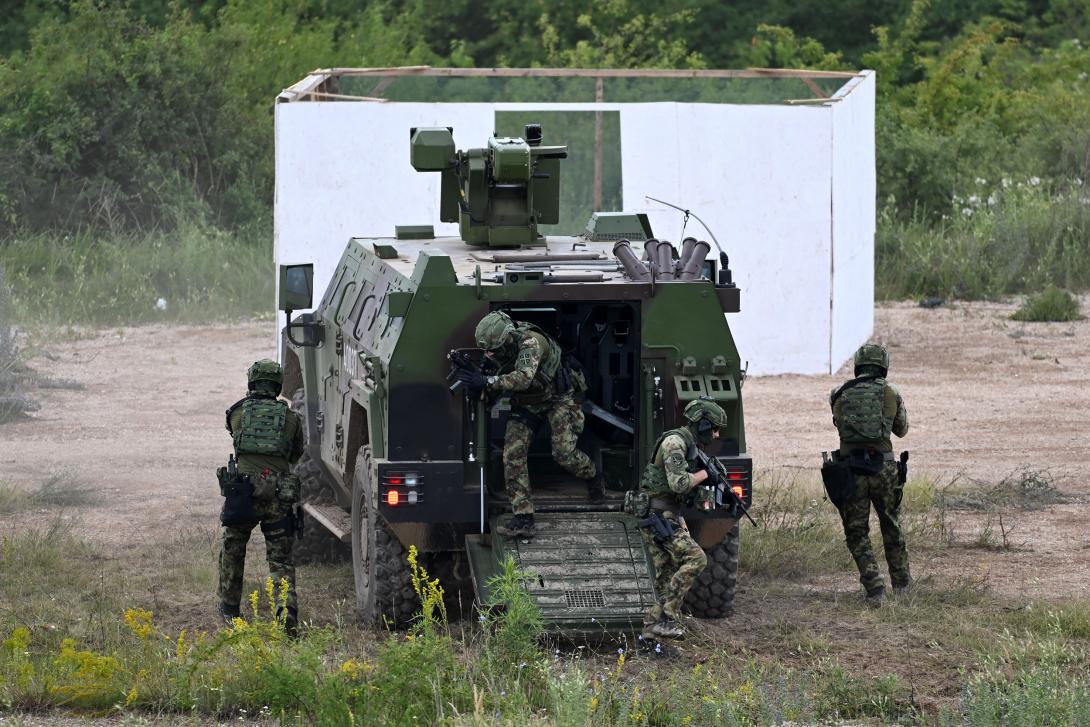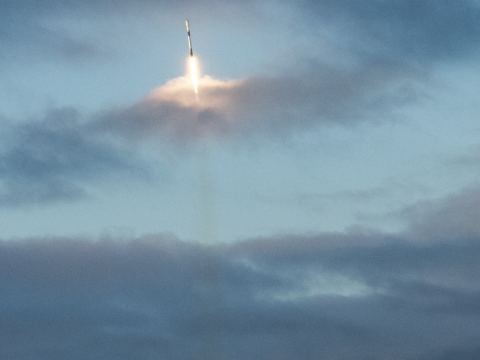To the Serbian Military and Industry: Go for NATO-Interoperable Technology
The Republic of Serbia’s armed forces could benefit from adopting technologies and systems that are interoperable with NATO equipment, a U.S. Department of Defense (DoD) official stated.
“As Serbia continues to modernize its military, we believe that the preferred option for procurement would be NATO-interoperable equipment and systems,” Deputy Pentagon Press Secretary Sabrina Singh said during a July 12 press conference at the Pentagon with reporters, including members of the Serbian media, in town for last week’s NATO Summit.
“This aligns with Serbia’s goals and presents significant advantages,” Singh stated. “You are seeing also, that as we are continuing to arm Ukraine, it is about NATO interoperability, which is incredibly important.”
The deputy press secretary acknowledged that such technology holdings may be more expensive but would be smart for the long term.
“And while U.S. and European equipment may require a higher initial investment, it ensures, right now, the long-term benefits through streamlined training, maintenance and interoperability,” Singh said.
And although other Balkan countries—such as Albania, Croatia and Montenegro—are NATO members, Serbia is not, nor does it want to be. As such, NATO has held its relationship with the republic under an Individual Partnership Action Plan since 2015.
Serbia did apply to become part of the continent’s economic alliance, the European Union (EU), and was granted EU "candidate status" in 2012. The republic must successfully complete the long-term process of EU accession, related negotiations and legislation integration before being accepted into the union.
“Serbia is maintaining its political dialogue and cooperation with NATO on issues of common interest, with an important focus on support for democratic, institutional and defense reforms,” according to a NATO document. “While Serbia is pursuing EU membership, unlike other Western Balkan partners, it does not aspire to join the alliance.”
However, Serbia has not recognized the Republic of Kosovo since its declaration of independence from Serbia in 2008.
NATO has been leading peace-support operations in Kosovo, known as the Kosovo Force (KFOR), since June 1999.
“Our KFOR peacekeeping mission remains focused on its U.N. mandate, and should stability be jeopardized, KFOR stands ready to intervene,” NATO Secretary General Jens Stoltenberg told President of the Republic of Serbia Aleksandar Vučić in August 2022. “And we will take any measure that is necessary to ensure a safe and secure environment and freedom of movement for all the people of Kosovo.”
To reinforce the KFOR peacekeeping mission, NATO members approved the request from NATO’s supreme allied commander Europe to temporarily add more reinforcements in Kosovo last fall, increasing the number of NATO troops to more than 4,500.
The DoD is “certainly aware of the heightened tensions” within the Western Balkans, presently and over the last few years, Singh said.
“We acknowledge that there are certainly tensions within the Western Balkan region,” the deputy press secretary said. “This heightened concern certainly underscores our ongoing cooperation and partnership in ensuring regional stability, so we're going to continue to monitor that.”
However, since Russia invaded Ukraine in February 2022, Serbia—a Russian ally—has not spoken out against the war, even when NATO’s president called out Serbia for not standing united against the invasion.
The U.S. military will continue its important relationship with Serbia, despite the rising tensions in the Western Balkans and the greater geopolitics, Singh noted.
“Serbia’s active cooperation with NATO is also a cornerstone of our defense relationship, enabling the Serbian Armed Forces’ valuable contributions to global security through participation in numerous EU and U.N. peacekeeping missions,” Singh stated. “We are going to continue to further deepen our cooperation through mutually beneficial, bilateral and multilateral exercises.”

As Serbia continues to modernize its military, we believe that the preferred option for procurement would be NATO-interoperable equipment and systems.
Already in 2024, Singh said, the United States and Serbia have increased their military-to-military cooperation.
"[We] are on track for over 100 military-to-military events in 2024. That's a nearly 25% increase from last year," Singh said. "That includes bilateral training, multilateral exercises like Platinum Wolf and high-level visits between both nations.”
Organized by the Serbian Armed Forces and the U.S. European Command, the Platinum Wolf 24 tactical training exercise took place in Serbia between June 10-21.
“The goal of this exercise, whose planning is based on the U.N. Charter, is to improve the interoperability and mutual understanding of the partner countries’ armed forces during the execution of a peace support operation in a multinational environment,” a statement from the Serbian Armed Forces said. “Exercise participants will be practicing the tactics, techniques and procedures applied when deployed on peacekeeping operations, focusing on the use of nonlethal weapons. Urban combat, defense of a base, control of mass gatherings and working at a checkpoint are part of the planned exercise activities.”
In addition, the Serbian Armed Forces completed its most recent exercise, Joint Tactical Exercise Fire Strike 2024, on July 4 at the Pasuljanske Livade Combined Arms Training Ground in Eastern Serbia with the Hungarian Defense Forces.
Working on information distribution and live-fire support with unmanned aerial systems, the Serbian military used tanks, armored fighting vehicles, artillery systems and weapons, anti-tank weapons, radar and air defense systems, airplanes, helicopters, ground and aerial unmanned platforms, and systems to protect or jam unmanned aircraft. Serbian warfighters performed some of the tasks and used a few of the capabilities for the first time.
“The general goal of the two-week exercise was to improve the ability to collect and distribute intelligence data and the effectiveness of fire support on the modern battlefield with the use of unmanned aircraft, and check the functioning of the organization and units of the Serbian Armed Forces,” the republic’s military said.
“Today, we could see for the first time the operation of the Mosquito 2 and SM-1 drones, then the delivery of ammunition by Little Miloš,” noted Supreme Commander of the Serbian Armed Forces and President of Serbia Vučić. “We saw exceptional hits from the PASARS and Kornet systems. They hit enemy tanks with incredible accuracy. You saw the action of Eagle planes and helicopters, and the snipers and special force members were exceptional.”
“We believe that stability and security is vital [to the region],” Singh concluded. “Kosovo, Bosnia and Herzegovina, they each face distinct challenges. Our role is that we are committed to supporting their paths to greater cooperation and prosperity. And we're going to continue to work closely on that.”






Comments